#Hughes AIM-54 Phoenix
Explore tagged Tumblr posts
Text
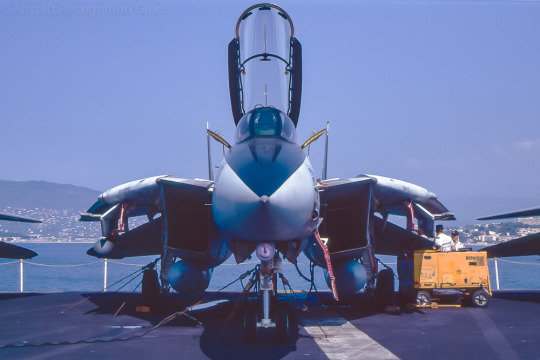
The F-14 Tomcat
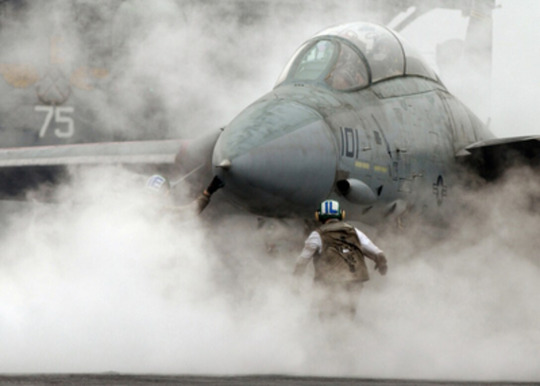
The F-14 Tomcat, an iconic American supersonic fighter jet, gained fame for its swing-wing design and role as a carrier-based interceptor. Developed by Grumman for the US Navy, it entered service in 1974 and was retired in 2006.
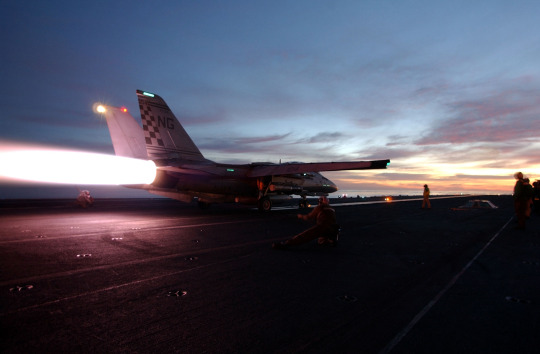
The F-14 Tomcat garnered notable performance records during its illustrious service. In 1974, an F-14A set a world speed record, reaching 1,606.342 miles per hour (2,585.086 kilometers per hour) over a 500-kilometer closed-circuit course. Its remarkable speed capabilities were underscored by its ability to exceed Mach 2.
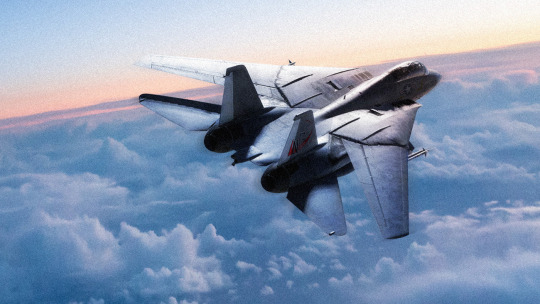
In combat, the F-14 demonstrated exceptional effectiveness, participating in pivotal military operations such as the Gulf War and Operation Enduring Freedom. Its swing-wing design and Pratt & Whitney TF30 turbofan engines endowed it with agility and versatility, enabling precise maneuvering and long-range engagements.
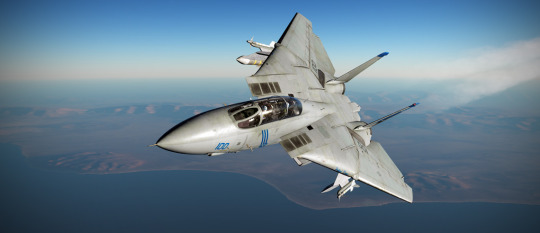
Armed with radar-guided missiles and a powerful radar system, it was designed for air superiority and fleet defense. The Tomcat played a crucial role in various conflicts, including the Gulf War. Its advanced avionics and long-range capabilities made it a formidable adversary.
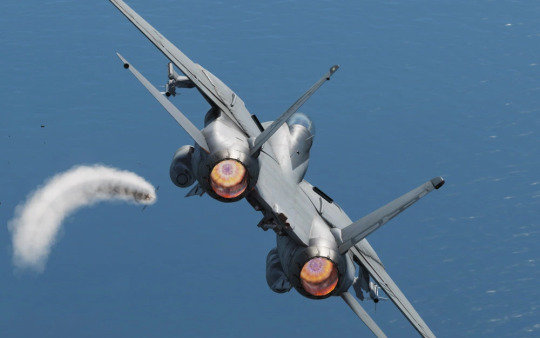
The F-14's advanced radar systems, including the Hughes AN/AWG-9 and later the AN/APG-71, facilitated multi-target tracking and engagement, particularly with the AIM-54 Phoenix missile system.
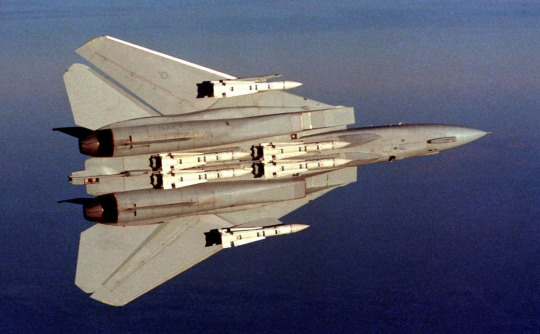
Beyond its performance in flight, the F-14 left an indelible mark on popular culture, immortalized in the film "Top Gun." Its enduring legacy as a symbol of American military power and aviation excellence continues to captivate enthusiasts and historians alike.
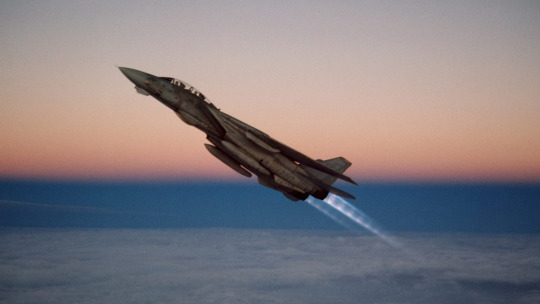
Though retired, its legacy endures as a symbol of naval aviation prowess and technological innovation.
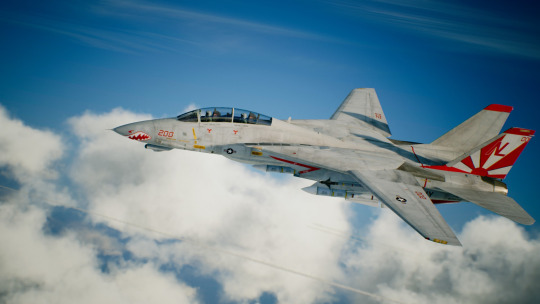
146 notes
·
View notes
Text

America’s Mach 3+ fighter, Bill Sweetman investigates
Hush KitFebruary 23, 2017
August 2, 2024
HOLY KEDLOCK by Bill Sweetman
If speed and range are your goals for an interceptor, you can’t beat the Lockheed YF-12. It’s hard to beat as a confusing story either. Technology demonstrator? Stalking horse for something quite different? Opportunistic effort to save a program in trouble? Possibly, all of the above.
North American’s F-108 Rapier Mach 3 interceptor was cancelled in September 1959. The F-108 was only eight months past mock-up review, following an on-again, off-again initial development. But the Rapier’s ASG-18 radar and GAR-9 missile combo, developed by Hughes, had started earlier than the F-108 itself and enjoyed more consistent support, and was not canceled along with the aircraft.
A few months later, in January 1960, the CIA awarded Lockheed a contract to build 12 A-12s. They would be purely photo birds, with a single pilot and one camera bay, and the goal was to operate them out of Area 51, thereby evading the British and German anoraks who had rumbled the U-2.
On May 1, 1960, Frank Powers’ U-2 was shot down near Sverdlovsk. No parades or hot hors d’oeuvres for him. Eisenhower approved a cover story that Khrushchev shot to smaller pieces than the airplane. The furious President banned any further overflights.
This left OXCART without a mission, barely six months into an expensive program, without a mission, and competing for money with the politically favored CORONA. Skunk Works boss Kelly Johnson proposed armed versions of the OXCART to the Air Force. It was risky because Air Force Chief of Staff Curtis LeMay was mounting a stalwart defense the XB-70 Valkyrie, but the interceptor version did not threaten the bomber. A contract was issued in October 1960 under which three A-12s would be completed as AF-12 interceptors with the F-108’s Hughes radar and missile system.

The AF-12, codenamed KEDLOCK, would feature some important differences from the CIA jets. Heavier and carrying more fuel, it would have a second cockpit replacing the camera bay, the massive ASG-18 radar in the nose, and four large weapon bays built into all-metal chines. (On the A-12, the chines were purely there to reduce the radar cross-section and were partly made of plastic material.) The GAR-9 was a 900-pound chonky boi and could carry either a high-explosive or blast-fragmentation warhead, with a range at launch up to 100 nm.
KEDLOCK benefited from the A-12 OXCART, which ran a year earlier and wrestled with the many basic problems of titanium use and propulsion development, and from the early start on ASG-18 and GAR-9. Wind tunnel tests showed that the huge ogival radome loused up the directional stability, so KEDLOCK acquired strakes under each engine nacelle and a large folding ventral fin.
Launching a weapon from a bay at Mach 3.2 was a challenge. Johnson’s deputy, Ben Rich, later said that the initial GAR-9 ejection system resulted in the missile passing between the front and rear cockpits, which would have been bad.

Flown in August 1963, the interceptor required little further work. Six out of seven missile shots were successful, the final shot from Mach 3.2 and 74,000 feet hitting a low-flying QB-47 drone—the first look-down, shoot-down interception and a trailblazer for the Navy’s AWG-9 and AIM-54 Phoenix programs.
KEDLOCK did a lot of the heavy lifting for the next version of the Blackbird, a reconnaissance-strike aircraft. First called RS-12, the project ran about a year behind KEDLOCK and emerged as the SR-71, with weapon bays converted to accommodate cameras and SIGINT gear.
The AF-12 had one more mission: deception. During 1963, as the pace of testing increased, observers started to notice the fast-moving A-12s and AF-12s, and the usual CIA/USAF tactic of confusing their reports with UFO sightings wore thin. Also, the project was far larger than the U-2 and involved more people and subcontractors, and many people in industry began to connect the dots. Bob Hotz’s staff at Aviation Week went to the Air Force with the news. Hotz would hold the story but not if anyone else got near it.
McNamara decided that the interceptor could be unveiled without compromising the A-12, and his view prevailed over the CIA’s caution. On February 24, 1964, two side-view photos were released of what was falsely described as the Lockheed A-11, and Johnson announced that a number of A-11s were being tested at Edwards Air Force Base. To keep the facts consistent with the President’s statement, two AF-12s were rushed from Area 51 to Edwards and quickly rolled into a hangar, where the heat from their airframes set the sprinklers off.

Had there been anything for it to shoot down, the YF-12 (as it was retrospectively designated, sometime before August 1964) might have been the ultimate interceptor. But the Soviet intercontinental strike force, even into the 1980s, amounted to a small and dwindling number of early Tu-95s, which Air Defense Command’s F-106s could cope with, and the YF-12s lived out their days as NASA test assets.
@Hushkit.net
24 notes
·
View notes
Text

-A speculative scale model showing an operational F-15N. | Photo: volzj
Flightline: 50 - McDonnell Douglas F-15N Seagle

-A full view of the F-15N Sea Eagle model. | Photo: volzj
Grumman’s F-14 was the endpoint of a long, torturous path to equip the Navy’s aircraft carriers with a high-speed, long range interceptor to defend against Russian bombers and their anti-carrier missiles. Initially planned to be the General Dynamics/Grumman F-111B, the failure of that airplane forced the Navy to request new submissions. Grumman’s submission to the new TFX program also included swing wings, but was an entirely new design. Grumman made the decision to incorporate as many technologies developed for the SeaPig as possible into the F-14, and that included the TF-30 engines, which proved to be inappropriate for a fighter. Though powerful enough to propel the F-14 to Mach 2.3, the TF-30 were sensitive to rapid throttle movement, and prone to compressor stalls at high angle of attack, which could send the fighter into an upright or inverted spin, both of which were deadly. The engines were also prone to failures of the turbine blades, which led to Grumman having to reinforce the engine nacelles to limit damage. Still, fully 28% of F-14 accidents could be traced to the engines.

-Line drawing of the proposed F-15N-PHX Sea Eagle. | Illustration: McDonnell Douglas/Boeing
With this in mind, in 1971 McDonnell Douglas offered a “navalized” version of its new F-15 air superiority fighter, still under development, to the USN. Modifications for the F-15N included a wing hinge, proper arresting hook and strengthened landing gear. Even with the weight imposed by these changes, the F-15N was expected to still be able to outmaneuver the F-14. What the initial proposal did not include were the AIM-54 Phoenix missiles or the AN/AWG-9 radar needed to aim and fire them. A study by the US Navy included adding the radar and AIM-54s, but the resulting aircraft would have weighed 10,000lbs more than a standard F-15A, erasing any advantage the Sea Eagle might have had. McDonnell Douglas, along with Hughes Aircraft, maker of the AIM-54 and the radar, worked up a proposal to modify the F-15s AN/APG-63 radar to interface with the AIM-54.

-Scale model of the F-15N-PHX showing AIM-54 mounts. | Photo: McDonnell Douglas
A Senate subcommittee began to study the proposal in 1973, and was later expanded to include a stripped F-14 variant and an upgraded F-4. A fly-off between the F-14A and F-15N was brought up, but was never held.

-Part of the Sea Eagle concept study involved integrating Harpoon anti-ship missiles. | Photo: McDonnell Douglas
The Navy ultimately stuck with the F-14, and with time and upgrades, including new GE F110 engines, the F-14A+ (later F-14B) and F-14D proved that the Tomcat was a capable aircraft. The Senate hearings did lead to the formation of Navy Fighter Study Group IV, which, through the second VFAX program, birthed the F/A-18 Hornet.
#aircraft#aviation#avgeek#cold war#airplanes#airplane#cold war history#coldwar#aviation history#us navy#mcdonnell douglas f15#mcdonnell douglas#f15n#f 15n#f15n sea eagle#f 15n sea eagle#aircraft carrier#carrier aircraft
68 notes
·
View notes
Text
AIM-54 Phoenix in Iran
For me one of the most incredible fighter aircraft to be built and put into service was the Grumman F-14 Tomcat

However what made the aircraft one of the most potent fighters was its weapon control system linked with its powerful AN/AWG-9 radar, a system capable of tracking 24 targets and guiding 6 missiles to 6 of these threats almost 100 miles away. To give the Tomcat it’s long claws an incredible weapon was introduced that gave the Tomcat its legendary status: the Hughes AIM-54 Phoenix long-range Air-to-air missile.
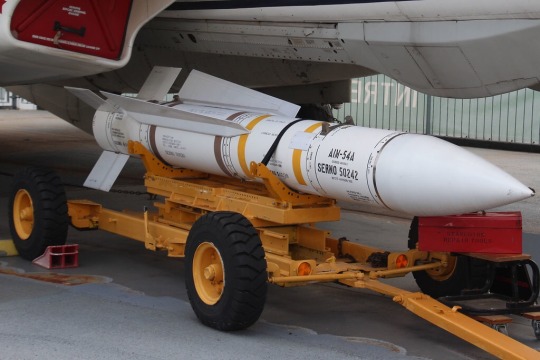
With a range of almost 100 miles, semi-active and active radar features and the ability to home on aircraft attempting to deflect the weapon via ECMs and also proved impossible to jam it was one of the most state of the art aircraft weapons introduced at the time in the 1970s. However due to its size, complexity and need for a powerful radar to fully utilise the weapon it was only used on the F-14, which means only countries who bought the Tomcat could use this missile which came down to two nations: the US and Iran.
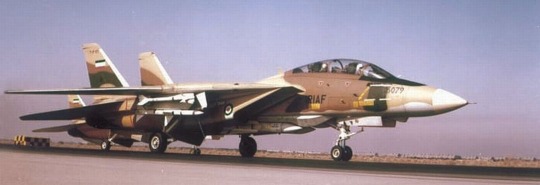
With Iran’s decision to acquire the F-14A came contract “Persian King” being signed in 1974. As well as 80 aircraft, training and spare parts and engines for 10 years, the contract also called for a total of 714 operational AIM-54A Phoenix missiles to be built and delivered to Iran. Whilst the Phoenix missiles built for Iran were slightly downgraded electronically to ensure it was less effective against US aircraft and their ECMs the weapon was just as potent as its US counterpart.
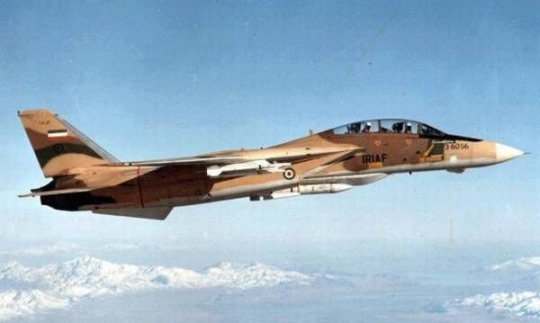
However in 1979 and Islamic Revolution swept through Iran and with it the US Friendly Shah, this along with the Hostage crisis at the US embassy shortly after led to the US turning its back on its former ally and most Shah friendly personnel fleeing the country for fear of torture at the hands of the new Islamic Government.
With the departure of Grumman and US Navy technicians from Iran and rumours that both the F-14As and the AIM-54As had all been sabotaged and made non-operational by the leaving personal it was assumed the Iranian crews now in charge would be unable to fix the aircraft and wepons, the US hoping the highly advanced F-14s would be non-operational in the hands of the new and strongly anti-western Iranian Reigeme as these could now represent a clear threat to others in the Gulf. The imprisonment and even executions of those trained on the aircraft and the weapons seemed to ensure this was the case.
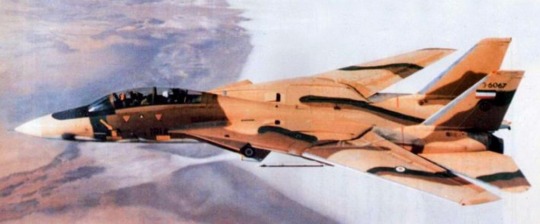
However in July of 1980 tensions and border clashes with Iran’s neighbor Iraq led to commanders of the new IRIAF to begin the process to get a number of F-14s back to operational status. A number of the damaged Phoenix missiles from attempts of Sabotage were also repaired and brought back to operational service.
On the 13th of September 1980 a border intrusion by an Iraqi MiG-23MS led to a historic moment for the Tomcat: The MiG was shot down by a single AIM-54A, the first kill with the mighty Phoenix. With the War with Iraq breaking out on the 22nd September 1980 a large number of imprisoned pilots and ground crew were slowly released from jail and were sent back to their units and by 1981 a rather astonishing 60 Tomcats were now operational, an incredible feat for the now cut-off nation without any outside support.

With more and more engagements came much needed combat experience and lessons were learned by the Iranians on how to use the Tomcat and how to employ the AIM-54A in combat. One of the more noticeable examples was the standard load reduced from the usual 4 Phoenix missiles from the start of the war to just 2.

This was done for a number of reasons. First was because there were only 224 rounds in country after the supply was cut off by the revolution so these rounds had to be used sparingly.
Second was the weight of 4 missiles reduced the Tomcat’s ability to dogfight, therefore the reduction of just 2 AIM-54As under the forward Pallets ensured if an opportunity to use the weapons were missed and the Tomcat was forced into a close in fight it still retained its superior manovering ability as the missiles mouted under the forward fuselage had no effect on the F-14s aerodynamics.
And lastly the Phoenix provided another useful trait for an outnumbered Air Force: Fear. Due to Iraqi pilots being trained to a much lower standard compared to the American-trained Iranian aircrews and their Soviet-made aircraft being fitted with poor RWR equipment led to a number of aircraft being shot down before the formation knew what hit them, which meant all it took was one Iraqi aircraft to be shot down to turn an entire mission formation around and abandon mission. Iraqi pilots often ran when the presence of an F-14 was known, as well as known hunting grounds were avoided at all costs by both Iraqi and Saudi pilots knowing the terrifying capabilities of the Tomcat and the Phoenix.
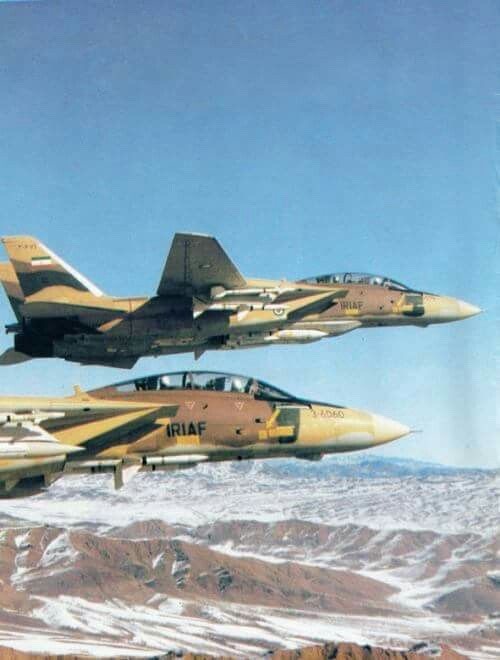
With the advantages of the F-14 clear over anything the IrAF had in its inventory the Tomcat crews used the aircraft and the Phoenix to its full advantage, often using utilising the Phoenix at long range and the big warhead proved deadly, sometimes downing more than one aircraft with the detonation, such as in December of 1980 when a single AIM-54 downed 2 MiG-23s and in January the following year a Phoenix downed 3 MiG-23s, with the 4th aircraft damaged, proving that 2 missiles were plenty for a typical mission as the fear of more attacks would drive most formations home.
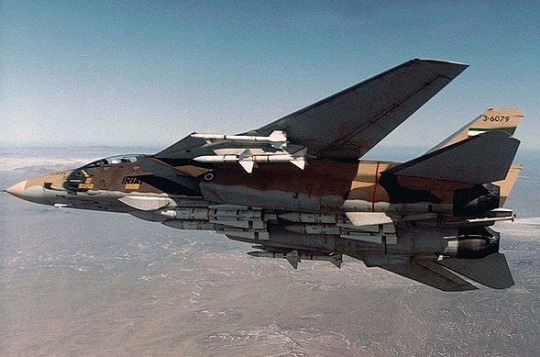
However by 1985 the stocks of operational AIM-54As were starting to be depleted. A combination of 5 years of hard war and the Phoenix missile’s components going past their shelf life as missiles need update kits to keep them in operational condition, especially a complex weapon like the Phoenix which has many sensitive and sophisticated parts to work and many of these became inoperable. This led to a experimental series of tests called “project SkyHawk” to see if the MiM-23 Surface-to-Air missile could work as a aircraft weapon, these tests proved ineffective and the stock of Phoenix missiles were boosted by other means like the Iran-contra affair in which a number of upgrade kits were provided to Iran by the US and a fair number of missiles were brought back to frontline status.
The Phoenix proved to be an incredibly effective weapon against every aircraft in the Iraqi Air Force, even against the most advanced aircraft like the Mirage F.1, MiG-25 and the Tupolev Tu-22B which possessed good RWRs and ECMs. By the end of the war in mid-1988 the Phoenix missile had been responsible for the 40 out of the estimated 160 aircraft shot down during the war, the missile proving incredibly effective and contributed to why in my opinion the F-14 was by far the most effective aircraft in the Iran-Iraq war. Despite depleting numbers of both Tomcats and it’s AIM-54s they still proved superior in the engagements it took part in.
Interesting how Iran showed the effectiveness of the AIM-54 in combat unlike the US who introduced the weapon as the US Navy have only had limited opportunities to use the weapon such as the Gulf war of 1991 where in a number of possible uses of the Phoenix the weapon didn’t work or the permission to fire was not granted due to fears of friendly fire. Only one kill was almost scored in 1999 by a US Phoenix in Iraq but the missile just missed by a few feet.
Today the original AIM-54 May still be in service with the IRIAF although it’s been very rarely seen on the 20-50 Tomcats estimated to be in service. With advancements in the aircraft Industry the Iranians have began a effort to arm its F-14s with modern domestic versions of the old US-made weapons originally supplied back in the 70s, most notably is the Fakour-90, a copy of the Phoenix which will be the new Long-range armament of the Tomcat in the coming years, coupled with the upgraded F-14A-M this could provide a suitable fighter/Interceptor for years to come although given this is Iran we are talking about it could be a poor attempt at modernisation and these could just be false.
But whatever the case the Iranian use of the AIM-54 during the Iran-Iraq proved beyond doubt the huge and complex AIM-54 combined with the AN/AWG-9 was an astonishing weapon system.
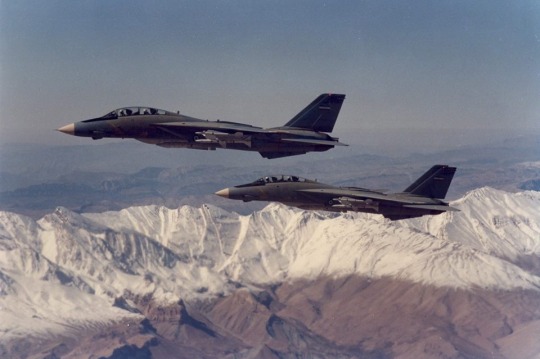
#grumman f 14 tomcat#f14atomcat#f14tomcat#f14#f14a#Tomcat#iriaf#islamic republic of iran air force#iran#iranian airspace#aim 54#phoenix#aim 54 phoenix#military aviation#fighter jet
8 notes
·
View notes
Text
Iran's Old F-14 Tomcats (Made in America) vs. F-22 Raptor Stealth Fighters: Who Wins?
The Raptor holds all of the cards in terms of instantaneous and sustained turn rates—which in the F-22’s case is greater than 30 degrees per second—and energy addition. The Raptor’s incredible specific excess power and sheer maneuverability combined with its new AIM-9X missiles makes it so that the odds are grotesquely stacked in the F-22 pilot’s favor. With the United States withdrawing from the Joint Comprehensive Plan of Action nuclear deal with Iran, a war with Tehran seems to be a distinct possibility. In the event of a military conflict between Washington and Tehran, there is also the ever-growing possibility that the White House might seek regime change in Iran.(This first appeared several months ago.)A full-scale military campaign against Iran would require the United States to destroy the Iranian air force—which to this day flies American-built warplanes. The best of Iran’s decrepit fighter aircraft fleet is the Grumman F-14 Tomcat. The Imperial Iranian Air Force purchased 80 of the powerful fourth-generation fighters before the 1979 Islamic revolution, but deliveries were halted at 79 aircraft. Additionally, Iran had purchased 714 Hughes (now Raytheon) AIM-54A Phoenix long-range semi-active/active radar-guided air-to-air missiles, which have a range of roughly 100 nautical miles.Recommended: The World’s Most Secretive Nuclear Weapons Program.Recommended: The Fatal Flaw That Could Take Down an F-22 or F-35.Recommended: Smith & Wesson's .44 Magnum Revolver: Why You Should Fear the 'Dirty Harry' Gun.When the F-14A was developed, it was amongst the most capable fighters developed by the United States during the late 1960s. The jet entered service with the U.S. Navy in 1974 equipped with the AWG-9 long-range pulse-Doppler radar, which had a range of over 115 nautical miles and was the first American radar set to incorporate a track while scan mode to allow for a multiple shot capability. Coupled with the AIM-54, the AWG-9 could target six enemy bombers simultaneously. On paper, the Tomcat provided the fleet with a potent capability—though the reality did not quite meet the Navy’s public relations hype.Iran has upgraded its Tomcats with new avionics and potentially new weapons, but only a handful of Tehran’s F-14s are in a flyable condition—perhaps as few as 20 aircraft. However, other than perhaps 20 Russian-made Mikoyan MiG-29 Fulcrums, the venerable Tomcat is the Islamic Iranian Air Force’s most capable fighter. In the event of a war, the F-14 would be Iran’s first line of defense against an American onslaught.The stealthy Lockheed Martin F-22A Raptor air superiority fighter would almost certainly lead an American attack. Compared to the antiquated F-14, the Raptor is a technological marvel and is equipped with some of the most sophisticated sensors ever developed for a military aircraft.The F-22 combines extreme stealth and sustained supersonic speed—it can cruise at just above Mach 1.8 without afterburners—with integrated avionics and extreme agility. The Raptor’s Northrop Grumman AN/APG-77 (V)1 active electronically scanned array radar and ALR-94 passive electronic support measures suite would spot an F-14 from many tens of nautical miles away before the Tomcat had any idea that an F-22 was in the vicinity.The Raptor, having detected a flight of Iranian F-14s and given the go-ahead to engage, would likely turn toward the enemy and launch its Raytheon AIM-120D AMRAAM missile—which reportedly has a range of 96 nautical miles when launched from a conventional fighter—from high supersonic speeds exceeding Mach 1.5 and at altitudes well above 50,000ft. It would be all over for the Iranian F-14s before anyone in the enemy formation would have any idea they were under attack.Even if the Raptors had run out of AMRAAMs and were forced to engage within visual range, the F-22s can use their stealth to close in unobserved to less than 1000ft to either kill the F-14s with Raytheon AIM-9X Sidewinders or 20mm Vulcan cannon fire. Indeed, F-22 pilots flying during exercises such as Red Flag or Northern Edge will often sneak into guns range to make unobserved kills from very close distances by taking advantage of the Raptor’s stealth. More often than not, the Raptor’s quarry is caught completely unaware.However, if by some bizarre circumstance the F-22 is embroiled in a dogfight with the F-14, the chances are the Raptor will kill the Tomcat unless the American pilot suffers from extremely bad luck or makes a serious error. The Raptor holds all of the cards in terms of instantaneous and sustained turn rates—which in the F-22’s case is greater than 30 degrees per second—and energy addition. The Raptor’s incredible specific excess power and sheer maneuverability combined with its new AIM-9X missiles makes it so that the odds are grotesquely stacked in the F-22 pilot’s favor. Of course, that’s just in the case that Iran’s leaders are foolish enough to take the United States head-on. It would be much smarter for Iran to use asymmetric means to take on the United States instead of challenging America in the air.
from Yahoo News - Latest News & Headlines
The Raptor holds all of the cards in terms of instantaneous and sustained turn rates—which in the F-22’s case is greater than 30 degrees per second—and energy addition. The Raptor’s incredible specific excess power and sheer maneuverability combined with its new AIM-9X missiles makes it so that the odds are grotesquely stacked in the F-22 pilot’s favor. With the United States withdrawing from the Joint Comprehensive Plan of Action nuclear deal with Iran, a war with Tehran seems to be a distinct possibility. In the event of a military conflict between Washington and Tehran, there is also the ever-growing possibility that the White House might seek regime change in Iran.(This first appeared several months ago.)A full-scale military campaign against Iran would require the United States to destroy the Iranian air force—which to this day flies American-built warplanes. The best of Iran’s decrepit fighter aircraft fleet is the Grumman F-14 Tomcat. The Imperial Iranian Air Force purchased 80 of the powerful fourth-generation fighters before the 1979 Islamic revolution, but deliveries were halted at 79 aircraft. Additionally, Iran had purchased 714 Hughes (now Raytheon) AIM-54A Phoenix long-range semi-active/active radar-guided air-to-air missiles, which have a range of roughly 100 nautical miles.Recommended: The World’s Most Secretive Nuclear Weapons Program.Recommended: The Fatal Flaw That Could Take Down an F-22 or F-35.Recommended: Smith & Wesson's .44 Magnum Revolver: Why You Should Fear the 'Dirty Harry' Gun.When the F-14A was developed, it was amongst the most capable fighters developed by the United States during the late 1960s. The jet entered service with the U.S. Navy in 1974 equipped with the AWG-9 long-range pulse-Doppler radar, which had a range of over 115 nautical miles and was the first American radar set to incorporate a track while scan mode to allow for a multiple shot capability. Coupled with the AIM-54, the AWG-9 could target six enemy bombers simultaneously. On paper, the Tomcat provided the fleet with a potent capability—though the reality did not quite meet the Navy’s public relations hype.Iran has upgraded its Tomcats with new avionics and potentially new weapons, but only a handful of Tehran’s F-14s are in a flyable condition—perhaps as few as 20 aircraft. However, other than perhaps 20 Russian-made Mikoyan MiG-29 Fulcrums, the venerable Tomcat is the Islamic Iranian Air Force’s most capable fighter. In the event of a war, the F-14 would be Iran’s first line of defense against an American onslaught.The stealthy Lockheed Martin F-22A Raptor air superiority fighter would almost certainly lead an American attack. Compared to the antiquated F-14, the Raptor is a technological marvel and is equipped with some of the most sophisticated sensors ever developed for a military aircraft.The F-22 combines extreme stealth and sustained supersonic speed—it can cruise at just above Mach 1.8 without afterburners—with integrated avionics and extreme agility. The Raptor’s Northrop Grumman AN/APG-77 (V)1 active electronically scanned array radar and ALR-94 passive electronic support measures suite would spot an F-14 from many tens of nautical miles away before the Tomcat had any idea that an F-22 was in the vicinity.The Raptor, having detected a flight of Iranian F-14s and given the go-ahead to engage, would likely turn toward the enemy and launch its Raytheon AIM-120D AMRAAM missile—which reportedly has a range of 96 nautical miles when launched from a conventional fighter—from high supersonic speeds exceeding Mach 1.5 and at altitudes well above 50,000ft. It would be all over for the Iranian F-14s before anyone in the enemy formation would have any idea they were under attack.Even if the Raptors had run out of AMRAAMs and were forced to engage within visual range, the F-22s can use their stealth to close in unobserved to less than 1000ft to either kill the F-14s with Raytheon AIM-9X Sidewinders or 20mm Vulcan cannon fire. Indeed, F-22 pilots flying during exercises such as Red Flag or Northern Edge will often sneak into guns range to make unobserved kills from very close distances by taking advantage of the Raptor’s stealth. More often than not, the Raptor’s quarry is caught completely unaware.However, if by some bizarre circumstance the F-22 is embroiled in a dogfight with the F-14, the chances are the Raptor will kill the Tomcat unless the American pilot suffers from extremely bad luck or makes a serious error. The Raptor holds all of the cards in terms of instantaneous and sustained turn rates—which in the F-22’s case is greater than 30 degrees per second—and energy addition. The Raptor’s incredible specific excess power and sheer maneuverability combined with its new AIM-9X missiles makes it so that the odds are grotesquely stacked in the F-22 pilot’s favor. Of course, that’s just in the case that Iran’s leaders are foolish enough to take the United States head-on. It would be much smarter for Iran to use asymmetric means to take on the United States instead of challenging America in the air.
August 26, 2019 at 08:24AM via IFTTT
0 notes
Text
Events 9.30
489 – Battle of Verona: The Ostrogoths under king Theoderic the Great defeat the forces of Odoacer for the second time at Verona (Northern Italy). 737 – Battle of the Baggage: Turgesh drive back an Umayyad invasion of Khuttal, follow them south of the Oxus and capture their baggage train. 1399 – Henry IV is proclaimed King of England. 1541 – Spanish conquistador Hernando de Soto and his forces enter Tula territory in present-day western Arkansas, encountering fierce resistance. 1551 – Tainei-ji incident: A coup in Yamaguchi by the military establishment of the Ōuchi clan forces their lord Ōuchi Yoshitaka to commit suicide, and the city is burned. 1744 – France and Spain defeat the Kingdom of Sardinia at the Battle of Madonna dell'Olmo. 1791 – The first performance of The Magic Flute, the last opera by Mozart to make its debut, took place at Freihaus-Theater auf der Wieden in Vienna, Austria. 1791 – The National Constituent Assembly in Paris is dissolved; Parisians hail Maximilien Robespierre and Jérôme Pétion as "incorruptible patriots". 1813 – Battle of Bárbula: Simón Bolívar defeats Santiago Bobadilla. 1860 – Britain's first tram service begins in Birkenhead, Merseyside. 1882 – Thomas Edison's first commercial hydroelectric power plant (later known as Appleton Edison Light Company) begins operation on the Fox River in Appleton, Wisconsin, United States. 1888 – Jack the Ripper kills his third and fourth victims, Elizabeth Stride and Catherine Eddowes. 1903 – The new Gresham's School is officially opened by Field Marshal Sir Evelyn Wood. 1906 – The Royal Galician Academy, Galician language's biggest linguistic authority, starts working in Havana. 1907 – McKinley National Memorial, the final resting place of assassinated U.S. President William McKinley and his family, is dedicated in Canton, Ohio. 1915 – Radoje Ljutovac becomes the first soldier in history to shoot down an enemy aircraft with ground-to-air fire. 1922 – University of Alabama opened the football season with a 110–0 victory over the Marion Military Institute which still stands as the school record for largest margin of victory and as their only 100 point game. 1927 – Babe Ruth becomes the first baseball player to hit 60 home runs in a season. 1931 – Start of "Die Voortrekkers" youth movement for Afrikaners in Bloemfontein, South Africa. 1935 – The Hoover Dam, astride the border between the U.S. states of Arizona and Nevada, is dedicated. 1938 – Britain, France, Germany and Italy sign the Munich Agreement, allowing Germany to occupy the Sudetenland region of Czechoslovakia. 1938 – The League of Nations unanimously outlaws "intentional bombings of civilian populations". 1939 – General Władysław Sikorski becomes commander-in-chief of the Polish Government in exile. 1939 – NBC broadcasts the first televised American football game between the Waynesburg Yellow Jackets and the Fordham Rams. Fordham won the game 34–7. 1941 – World War II: Holocaust in Kiev, Ukraine: German Einsatzgruppe C complete Babi Yar massacre. 1943 – The United States Merchant Marine Academy (USMMA) at Kings Point, New York was dedicated by President Franklin D. Roosevelt. 1945 – The Bourne End rail crash, in Hertfordshire, England, kills 43 1947 – The World Series, featuring the New York Yankees and the Brooklyn Dodgers, is televised for the first time. 1949 – The Berlin Airlift ends. 1954 – The U.S. Navy submarine USS Nautilus is commissioned as the world's first nuclear reactor powered vessel. 1962 – Mexican-American labor leader César Chávez founds the National Farm Workers Association, which later becomes United Farm Workers. 1962 – James Meredith enters the University of Mississippi, defying segregation. 1965 – The Lockheed L-100, the civilian version of the C-130 Hercules, is introduced. 1965 – The 30 September Movement attempts a coup against the Indonesian government, which is crushed by the military under Suharto and leads to a mass anti-communist purge, with over 500,000 people killed. 1966 – The British protectorate of Bechuanaland declares its independence, and becomes the Republic of Botswana. Seretse Khama takes office as the first President. 1967 – BBC Light Programme, Third Programme and Home Service are replaced with BBC Radio 2, 3 and 4 Respectively, BBC Radio 1 is also launched with Tony Blackburn presenting its first show. 1968 – The Boeing 747 is rolled out and shown to the public for the first time at the Boeing Everett Factory. 1970 – Jordan makes a deal with the Popular Front for the Liberation of Palestine (PFLP) for the release of the remaining hostages from the Dawson's Field hijackings. 1972 – Roberto Clemente records the 3,000th and final hit of his career. 1975 – The Hughes (later McDonnell Douglas, now Boeing) AH-64 Apache makes its first flight. Eight years later, the first production model rolled out of the assembly line. 1977 – Because of US budget cuts and dwindling power reserves, the Apollo program's ALSEP experiment packages left on the Moon are shut down. 1979 – The Hong Kong MTR commences service with the opening of its Modified Initial System (aka. Kwun Tong Line). 1980 – Ethernet specifications are published by Xerox working with Intel and Digital Equipment Corporation. 1988 – Al Holbert was fatally injured when his privately owned propeller driven Piper PA-60 aircraft crashed shortly after takeoff near Columbus, Ohio when a clamshell door was not closed. 1990 – The Dalai Lama unveils the Canadian Tribute to Human Rights in Canada's capital city of Ottawa. 1993 – The 6.2 Mw Latur earthquake shakes Maharashtra, India with a maximum Mercalli intensity of VIII (Severe) killing 9,748 and injuring 30,000. 1994 – Aldwych tube station (originally Strand Station) of the London Underground closes after eighty-eight years in service. 1994 – Ongar railway station, the furthest London Underground from Central London, closes. 1999 – The Tokaimura nuclear accident causes the deaths of two technicians in Japan's second-worst nuclear accident. 2004 – The AIM-54 Phoenix, the primary missile for the F-14 Tomcat, is retired from service. Almost two years later, the Tomcat is retired. 2005 – The controversial drawings of Muhammad are printed in the Danish newspaper Jyllands-Posten. 2009 – The 7.6 Mw Sumatra earthquake shakes central Sumatra with a maximum Mercalli intensity of VIII (Severe). This dip-slip (reverse) earthquake left 1,115 people dead, and was followed several days later by a 6.6 Mw strike-slip event. 2016 – Hurricane Matthew became a Category 5 hurricane, making it the strongest hurricane to form in the Caribbean Sea, since Hurricane Felix in 2007. 2017 – Titus Zeman SDB. - priest, beatification ceremony in Bratislava, Slovakia.
0 notes
Video
NMC Grumman F-14A Tomcat 157988 by Wing attack Plan R Via Flickr: F-14A-40-MC. C.N. 9. Naval Air Missile Test Center based at NAS Point Mugu, CA. 9th prototype for AN/AWG-9 radar evaluation. Withdrawn from service to MASDC 12 March, 1982 as AA 1K0005. Departed MASDC 5 August, 1985 to NARF (Naval Air Rework Facility), NAS North Island, CA. On exhibit at NAS Oceana Air Park, VA. Photo Credit's: Unknown to me (Reprint). I found similar photos on the internet dated around October, 1974. The AIM-54 Phoenix is/was a radar-guided, long-range air-to-air missile (AAM), carried in clusters of up to six missiles on the Grumman F-14 Tomcat, its only operational launch platform. The Phoenix was the United States' only long-range air-to-air missile. The combination of Phoenix missile and the AN/AWG-9 guidance radar was the first aerial weapons system that could simultaneously engage multiple targets. Due to its active radar tracking, the brevity code "Fox Three" was used when firing the AIM-54. Both the missile and the aircraft were used by Iran and the United States Navy. In US service both are now retired, the AIM-54 Phoenix in 2004 and the F-14 in 2006. They were replaced by the shorter-range AIM-120 AMRAAM, employed on the F/A-18 Hornet and F/A-18E/F Super Hornet—in its AIM-120D version, the latest version of the AMRAAM just matches the Phoenix's maximum range. The AIM-54 is credited with 62 air-to-air kills, all scored by Iran during the eight-year Iran–Iraq War. Following the retirement of the F-14 by the U.S. Navy, the weapon's only current operator is the Islamic Republic of Iran Air Force. Characteristics- The following is a list of AIM-54 Phoenix specifications: -Primary function: long-range, air-launched, air-intercept missile -Contractor: Hughes Aircraft Company and Raytheon Corporation -Unit cost: about $477,000, but this varied greatly -Power plant: solid propellant rocket motor built by Hercules Incorporated -Length: 13 ft (4.0 m) -Weight: 1,000–1,040 pounds (450–470 kg) -Diameter: 15 in (380 mm) -Wing span: 3 ft (910 mm) -Range: over 100 nautical miles (120 mi; 190 km) (actual range is classified) -Speed: 3,000+ mph (4,680+ km/h) -Guidance system: semi-active and active radar homing -Warheads: proximity fuze, high explosive -Warhead weight: 135 pounds (61 kg) -Users: US (U.S. Navy), Iran (IRIAF) -Date deployed: 1974 -Date retired (U.S.): September 30, 2004
#F-14A#Bu.No.157988#Grumman#Tomcat#Naval_Missile_Center#NAS_Point_Mugu#AIM-54A_Phoenix_Missile#U.S.Navy#1974#flickr
7 notes
·
View notes
Text
G. Verver Following
AIM-54 Phoenix HUGHES AEROSPACE
AIM-54 Phoenix radar-guided, long-range air-to-air missile (AAM), Point Mugu Missile Park, Naval Base Ventura County, 22 March 2017.
29 notes
·
View notes
Text

-A full view of the F-15N Sea Eagle model. | Photo: volzj
FLIGHTLINE: 133 - MCDONNELL DOUGLAS F-15N AND VOUGHT V-1600
McDonnell Douglas and Vought both offered navalized variants of the F-15 and F-16 respectively, but neither progressed beyond models.

-A speculative scale model showing an operational F-15N . | Photo: volzj
MCDONNELL DOUGLAS F-15N SEA EAGLE
Grumman’s F-14 was the endpoint of a long, torturous path to equip the Navy’s aircraft carriers with a high-speed, long range interceptor to defend against Russian bombers and their anti-carrier missiles. Initially planned to be the General Dynamics/Grumman F-111B, the failure of that airplane forced the Navy to request new submissions. Grumman’s submission to the new TFX program also included swing wings, but was an entirely new design. Grumman made the decision to incorporate as many technologies developed for the SeaPig as possible into the F-14, and that included the TF-30 engines, which proved to be inappropriate for a fighter. Though powerful enough to propel the F-14 to Mach 2.3, the TF-30 were sensitive to rapid throttle movement, and prone to compressor stalls at high angle of attack, which could send the fighter into an upright or inverted spin, both of which were deadly. The engines were also prone to failures of the turbine blades, which led to Grumman having to reinforce the engine nacelles to limit damage. Still, fully 28% of F-14 accidents could be traced to the engines.

-Line drawing of the proposed F-15N-PHX Sea Eagle . | Illustration: McDonnell Douglas/Boeing
With this in mind, McDonnell Douglas in 1971 offered a “navalized” version of its new F-15 air superiority fighter, still under development, to the USN. Modifications for the F-15N included a wing hinge, proper arresting hook and strengthened landing gear. Even with the weight imposed by these changes, the F-15N was expected to still be able to outmaneuver the F-14. What the initial proposal did not include were the AIM-54 Phoenix missiles or the AN/AWG-9 radar needed to aim and fire them. A study by the US Navy included adding the radar and AIM-54s, but the resulting aircraft would have weighed 10,000lbs more than a standard F-15A, erasing any advantage the Sea Eagle might have had. McDonnell Douglas, along with Hughes Aircraft, maker of the AIM-54 and the radar, worked up a proposal to modify the F-15s AN/APG-63 radar to interface with the AIM-54.

-Scale model of the F-15N-PHX showing AIM-54 mounts . | Photo: McDonnell Douglas
A Senate subcommittee began to study the proposal in 1973, and was later expanded to include a stripped F-14 variant and an upgraded F-4. A fly-off between the F-14A and F-15N was brought up, but was never held.

-Part of the Sea Eagle concept study also involved integrating Harpoon anti-ship missiles . | Photo: McDonnell Douglas
The Navy ultimately stuck with the F-14, and with time and upgrades, including new GE F110 engines, the F-14A+ (later F-14B) and F-14D proved that the Tomcat was a capable aircraft. The Senate hearings did lead to the formation of Navy Fighter Study Group IV, which, through the second VFAX program, birthed the F/A-18 Hornet.
VOUGHT MODEL 1600
On 28 August 1974 the US Navy developed an operational requirement for a replacement for the F-4 Phantom II and A-7 Corsair II. The winner of this VFAX (Naval Fighter Attack Experimental) program would also compliment the F-14 Tomcat. The following year, Congress appropriated $20 million for a new navy aircraft program with the stipulation that instead of the VFAX, the Navy adapt the winner of the Air Force's LWF (Lightweight Fighter) program. As the two contractors in the LWF program, General Dynamics and Northrop, had little to no experience with building carrier aircraft, they sought partnerships with other companies, GD teaming with LTV (Vought) and Northrop with McDonnell Douglas. The GD/LTV offering was known as the Model 1600, and despite being based on the YF-16, the aircraft was a Viper only in the barest sense.

-Orthograph of the Model 1600-1. | Illustration: Ling-Temco-Vought
The aircraft was three feet longer than the YF-16, with a flatter, broader fuselage. The wingspan was also increased by two feet; full-span slats and larger flaps were added as well. The tail was modified, with the horizontal stabilizers being made larger and the anhedral of the YF-16 deleted. The one piece canopy was changed to a two piece (three for the two-seat model), with the front portion hinged at the front like the F-35. A retractable aerial refueling probe was added to the starboard side, the nosewheel was reconfigured to allow engagement with the carrier's catapult system, and the existing arresting hook was beefed up to allow full carrier landings. A new pulse-doppler radar was added, allowing the 1600 to aim and fire AIM-7 Sparrow BVR missiles. The wingtip Sidewinder rails were removed, and replaced by pylons under the wings.

-Line drawing of the Model 1600. | Illustration: LTV
There were three separate models of the 1600, with the main difference being the engine used:
1600 - Most commonality with the F-16, powered by the P&W F401
1601 - Engine swap with a P&W F100
1602(B) - Least commonality with the F-16, fuselage fore and aft of the wings enlarged, engine swap to the GE F101

-Two Model 1602s in flight over a Carrier Group. | Illustration: LTV

-A single Model 1600 with different weapons arrangement. | Illustration: LTV

-Scale model of an LTV Model 1600. | Photo: fighting-falcon.eu
Development of the 1600 ended when the Navy selected the Northrop/McDonnell Douglas design, based on the YF-17. Reasons for the selection include the YF-17s two-engine design, pushback from the Air Force and GD on altering the YF-16 design, and issues with adapting the F-16 to carrier service.
#aircraft#aviation#avgeek#cold war#airplanes#airplane#cold war history#coldwar#usaf#aviation history#alternate history#f15 sea eagle#Vought Model 1600#mcdonnell douglas f15#general dynamics f 16 fighting falcon#united states navy#us navy#aircraft carrier#carrier aircraft#f14tomcat
27 notes
·
View notes
Text

The missile used in the testing was the Hughes GAR9/AIM-47, an updated Falcon missile that was never used, but whose technology was used in part for the AIM-54 Phoenix (F-14 Tomcat) system. There were 7 test shots from YF-12A interceptors (SR-71 fighters!); one shot downed a sister QB-47E drone over the Pt. Mugu/Pacific Missile test range. The B-47 has a photo nose, and was one of only a few RB-47s built stock for the photo mission… a source also said that there were arresting gear behind the fuselage wheels for drone recovery. The odd under-wing apparatus is part of a target measuring device to tell how close a missile passed by the drone.
6 notes
·
View notes
Text
Check out This Amazing Video of an Iranian F-14 Firing a Fakour-90 Air-To-Air Missile
The missile is a copy of the Hughes AIM-54 Phoenix missile that was sold together with the F-14 to Iran in the late 1970s.The following interesting video is the first known footage that shows an Islamic Republic of Iran Air Force (IRIAF) F-14A Tomcat firing a Fakour-90 air-to-air missile.The missile is a copy of the Hughes AIM-54 Phoenix missile that was sold together with the F-14 to Iran in the late 1970s.The missile was developed by the Iranian Army, Ministry of Defense and Armed Forces Logistics, and IRIAF. In Oct. 2011, it was announced that the missile had reached the stage of mass production.The U.S. Navy retired the iconic Tomcat on Sep. 22, 2006 and today the F-14 remains in in service with IRIAF.
from Yahoo News - Latest News & Headlines
The missile is a copy of the Hughes AIM-54 Phoenix missile that was sold together with the F-14 to Iran in the late 1970s.The following interesting video is the first known footage that shows an Islamic Republic of Iran Air Force (IRIAF) F-14A Tomcat firing a Fakour-90 air-to-air missile.The missile is a copy of the Hughes AIM-54 Phoenix missile that was sold together with the F-14 to Iran in the late 1970s.The missile was developed by the Iranian Army, Ministry of Defense and Armed Forces Logistics, and IRIAF. In Oct. 2011, it was announced that the missile had reached the stage of mass production.The U.S. Navy retired the iconic Tomcat on Sep. 22, 2006 and today the F-14 remains in in service with IRIAF.
July 24, 2019 at 04:00AM via IFTTT
0 notes
Text
Check out This Amazing Video of an Iranian F-14 Firing a Fakour-90 Air-To-Air Missile
The missile is a copy of the Hughes AIM-54 Phoenix missile that was sold together with the F-14 to Iran in the late 1970s.The following interesting video is the first known footage that shows an Islamic Republic of Iran Air Force (IRIAF) F-14A Tomcat firing a Fakour-90 air-to-air missile.The missile is a copy of the Hughes AIM-54 Phoenix missile that was sold together with the F-14 to Iran in the late 1970s.The missile was developed by the Iranian Army, Ministry of Defense and Armed Forces Logistics, and IRIAF. In Oct. 2011, it was announced that the missile had reached the stage of mass production.The U.S. Navy retired the iconic Tomcat on Sep. 22, 2006 and today the F-14 remains in in service with IRIAF.
from Yahoo News - Latest News & Headlines
The missile is a copy of the Hughes AIM-54 Phoenix missile that was sold together with the F-14 to Iran in the late 1970s.The following interesting video is the first known footage that shows an Islamic Republic of Iran Air Force (IRIAF) F-14A Tomcat firing a Fakour-90 air-to-air missile.The missile is a copy of the Hughes AIM-54 Phoenix missile that was sold together with the F-14 to Iran in the late 1970s.The missile was developed by the Iranian Army, Ministry of Defense and Armed Forces Logistics, and IRIAF. In Oct. 2011, it was announced that the missile had reached the stage of mass production.The U.S. Navy retired the iconic Tomcat on Sep. 22, 2006 and today the F-14 remains in in service with IRIAF.
July 24, 2019 at 04:00AM via IFTTT
0 notes
Text
Check out This Video: One of Iran's F-14s Fighters Performed a Night Scramble
The following gorgeous video shows a night scramble of a fully armed Islamic Republic of Iran Air Force (IRIAF) F-14A Tomcat.As you can see the several video clips show almost every air-to-air weapon carried by IRIAF F-14s.Noteworthy along with the M61A1 Vulan 20mm internal cannon, AIM-54 Phoenix radar-guided long-range air-to-air missile, AIM-7 Sparrow medium-range semi-active radar homing air-to-air missile and AIM-9 Sidewinder short-range air-to-air missile, Iranian Tomcats can be loaded also with the Fakour-90 air-to-air missile and MIM-23 Hawk surface-to-air-missile (SAM) used as air-to-air missile.The Fakour is a copy of the Hughes AIM-54 Phoenix missile that was sold together with the F-14 to Iran in the late 1970s.The missile was developed by the Iranian Army, Ministry of Defense and Armed Forces Logistics, and IRIAF. In Oct. 2011, it was announced that the missile had reached the stage of mass production.
from Yahoo News - Latest News & Headlines
The following gorgeous video shows a night scramble of a fully armed Islamic Republic of Iran Air Force (IRIAF) F-14A Tomcat.As you can see the several video clips show almost every air-to-air weapon carried by IRIAF F-14s.Noteworthy along with the M61A1 Vulan 20mm internal cannon, AIM-54 Phoenix radar-guided long-range air-to-air missile, AIM-7 Sparrow medium-range semi-active radar homing air-to-air missile and AIM-9 Sidewinder short-range air-to-air missile, Iranian Tomcats can be loaded also with the Fakour-90 air-to-air missile and MIM-23 Hawk surface-to-air-missile (SAM) used as air-to-air missile.The Fakour is a copy of the Hughes AIM-54 Phoenix missile that was sold together with the F-14 to Iran in the late 1970s.The missile was developed by the Iranian Army, Ministry of Defense and Armed Forces Logistics, and IRIAF. In Oct. 2011, it was announced that the missile had reached the stage of mass production.
July 05, 2019 at 06:30AM via IFTTT
0 notes
Text
Video Alert: Watch an Iranian F-14A Launch a Fakour-90 Air-To-Air Missile
The following interesting video is the first known footage that shows an Islamic Republic of Iran Air Force (IRIAF) F-14A Tomcat firing a Fakour-90 air-to-air missile.The missile is a copy of the Hughes AIM-54 Phoenix missile that was sold together with the F-14 to Iran in the late 1970s.The missile was developed by the Iranian Army, Ministry of Defense and Armed Forces Logistics, and IRIAF. In Oct. 2011, it was announced that the missile had reached the stage of mass production.The U.S. Navy retired the iconic Tomcat on Sep. 22, 2006 and today the F-14 remains in in service with IRIAF.In Jan. 2007, U.S. Department of Defense (DoD) announced that sales of spare F-14 parts would be suspended over concerns of the parts ending up in Iran and in Jul. 2007 the remaining U.S. F-14s were shredded to ensure that any parts could not be acquired.However in Oct. 2010 IRIAF commander stated that his country was overhauling its F-14s and mentioned that Iran-made radar system had been installed on the fighter.
from Yahoo News - Latest News & Headlines
The following interesting video is the first known footage that shows an Islamic Republic of Iran Air Force (IRIAF) F-14A Tomcat firing a Fakour-90 air-to-air missile.The missile is a copy of the Hughes AIM-54 Phoenix missile that was sold together with the F-14 to Iran in the late 1970s.The missile was developed by the Iranian Army, Ministry of Defense and Armed Forces Logistics, and IRIAF. In Oct. 2011, it was announced that the missile had reached the stage of mass production.The U.S. Navy retired the iconic Tomcat on Sep. 22, 2006 and today the F-14 remains in in service with IRIAF.In Jan. 2007, U.S. Department of Defense (DoD) announced that sales of spare F-14 parts would be suspended over concerns of the parts ending up in Iran and in Jul. 2007 the remaining U.S. F-14s were shredded to ensure that any parts could not be acquired.However in Oct. 2010 IRIAF commander stated that his country was overhauling its F-14s and mentioned that Iran-made radar system had been installed on the fighter.
July 03, 2019 at 10:48AM via IFTTT
0 notes
